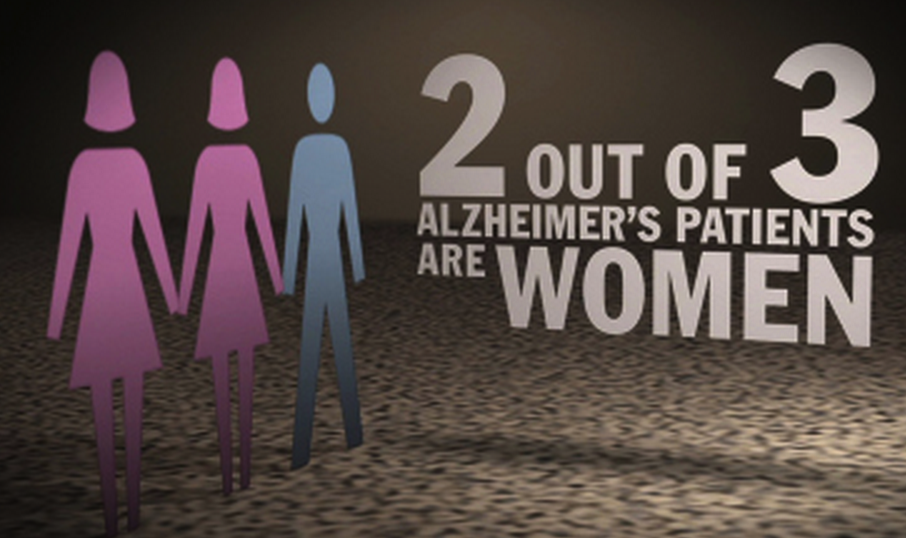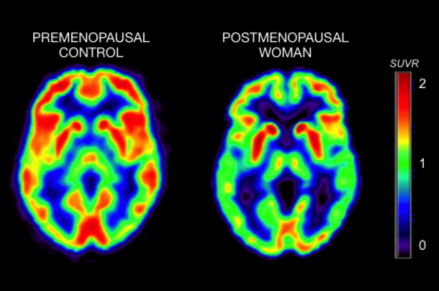Alzheimers in Men and Women | why are women more likely to get it?

 Nearly two-thirds of Americans with Alzheimer’s disease are women, and now some scientists are questioning the long-held assumption that it’s just because they tend to live longer than men. Time to ask the more targeted questions:
Nearly two-thirds of Americans with Alzheimer’s disease are women, and now some scientists are questioning the long-held assumption that it’s just because they tend to live longer than men. Time to ask the more targeted questions:
- What else may put women at extra risk?
- Could it be genetics?
- Biological differences in how women age?
- Maybe even lifestyle factors?
- Finding out might affect treatments or preventive care.
Amy Shives of Spokane, Wash., was diagnosed with early onset Alzheimer’s disease in 2011. Nearly two-thirds of Americans with Alzheimer’s disease are women, and scientists are questioning the assumption that it’s just because women tend to live longer than men.
One worrisome hint is that research shows a notorious Alzheimer’s-related gene has a bigger impact on women than men.
“There are enough biological questions pointing to increased risk in women that we need to delve into that and find out why,” said Maria Carrillo, chief science officer for the Alzheimer’s Association.
Last month, the association brought 15 leading scientists together to ask what’s known about women’s risk. Later this summer, Carrillo said it plans to begin funding research to address some of the gaps.
“There is a lot that is not understood and not known. It’s time we did something about it,” she said.
A recent Alzheimer’s Association report estimates that at age 65, women have about a 1 in 6 chance of developing Alzheimer’s during the rest of their lives, compared with a 1 in 11 chance for men.
The tricky part is determining how much of the disparity is due to women’s longevity or other factors.
“It is true that age is the greatest risk factor for developing Alzheimer’s disease,” said University of Southern California professor Roberta Diaz Brinton, who presented data on gender differences at a meeting of the National Institutes of Health this year.
But, she said, “on average, women live four or five years longer than men, and we know that Alzheimer’s is a disease that starts 20 years before the diagnosis.” That’s how early cellular damage can quietly begin.
Brinton researches if menopause can be a tipping point that leaves certain women vulnerable.
However it starts brewing, there’s some evidence that once Alzheimer’s is diagnosed, women may worsen faster; scans show more rapid shrinkage of certain brain areas.
But gene research offers the most startling evidence of a sex difference.
Stanford University researchers analyzed records of more than 8,000 people for a form of a gene named ApoE-4, long known to increase Alzheimer’s risk.
Women who carry a copy of that gene variant were about twice as likely to eventually develop Alzheimer’s as women without the gene, while men’s risk was only slightly increased, Stanford’s Dr. Michael Greicius reported last year.
It’s not clear why. It may be in how the gene interacts with estrogen, Brinton said.
Amy Shives, 57, of Spokane, Washington, recalls when her mother began showing symptoms of Alzheimer’s. But it wasn’t until after her own diagnosis a few years ago that Shives looked up the gender statistics.
“That was alarming,” said Shives, who is in the early stages of Alzheimer’s, which struck at a younger-than-usual age and forced her retirement as a college counselor. “The impact on our lives and that of our families is extraordinary.”
She points to another disproportionate burden: About 60 percent of caregivers for Alzheimer’s patients are women.
“My daughters are in their 20s and I’m already ill,” Shives said. “It’s very stressful for them to think about when their mother’s going to need their help.”
What drives the difference in Alzheimer’s cases isn’t clear, said Dr. Susan Resnick of the National Institutes of Health.
“We really have had a tough time understanding whether or not women really are more affected by the disease, or it’s just that they live longer,” Resnick said.
Data from the long-running Framingham, Massachusetts, health study suggests that because more men die from heart disease in middle age, those who survive past 65 may have healthier hearts that in turn provide some brain protection. Many of the same factors – obesity, high cholesterol, diabetes – that damage arteries also are Alzheimer’s risks.
What about hormones? That’s been hard to pin down. Years ago, a major study found that estrogen therapy after 65 might increase risk of dementia, although later research showed hormone replacement around the onset of menopause wasn’t a problem.
 Brinton studies how menopause changes the brain. Estrogen helps regulate the brain’s metabolism, how it produces the energy for proper cognitive function, and it must switch to a less efficient backup method as estrogen plummets, she said.
Brinton studies how menopause changes the brain. Estrogen helps regulate the brain’s metabolism, how it produces the energy for proper cognitive function, and it must switch to a less efficient backup method as estrogen plummets, she said.“It’s like the brain is a little bit diabetic,” said Brinton, who is studying whether that may relate to menopausal symptoms in women who later experience cognitive problems.
Carrillo notes that 40 years ago, heart disease was studied mainly in men, with little understanding of how women’s heart risks can differ. “How do we make sure we’re not making that mistake when it comes to Alzheimer’s?” she asked.
The more questions will hopefully lead to a greater understanding how the body ages and the differences between men and women.
- What are the answers? That will come down to the amazing professionals that dig deeper and uncover unknowns and lead us to better therapies that improve our lives in our later years. This article was originally published in pressherald.com
photo by kvdr.com


